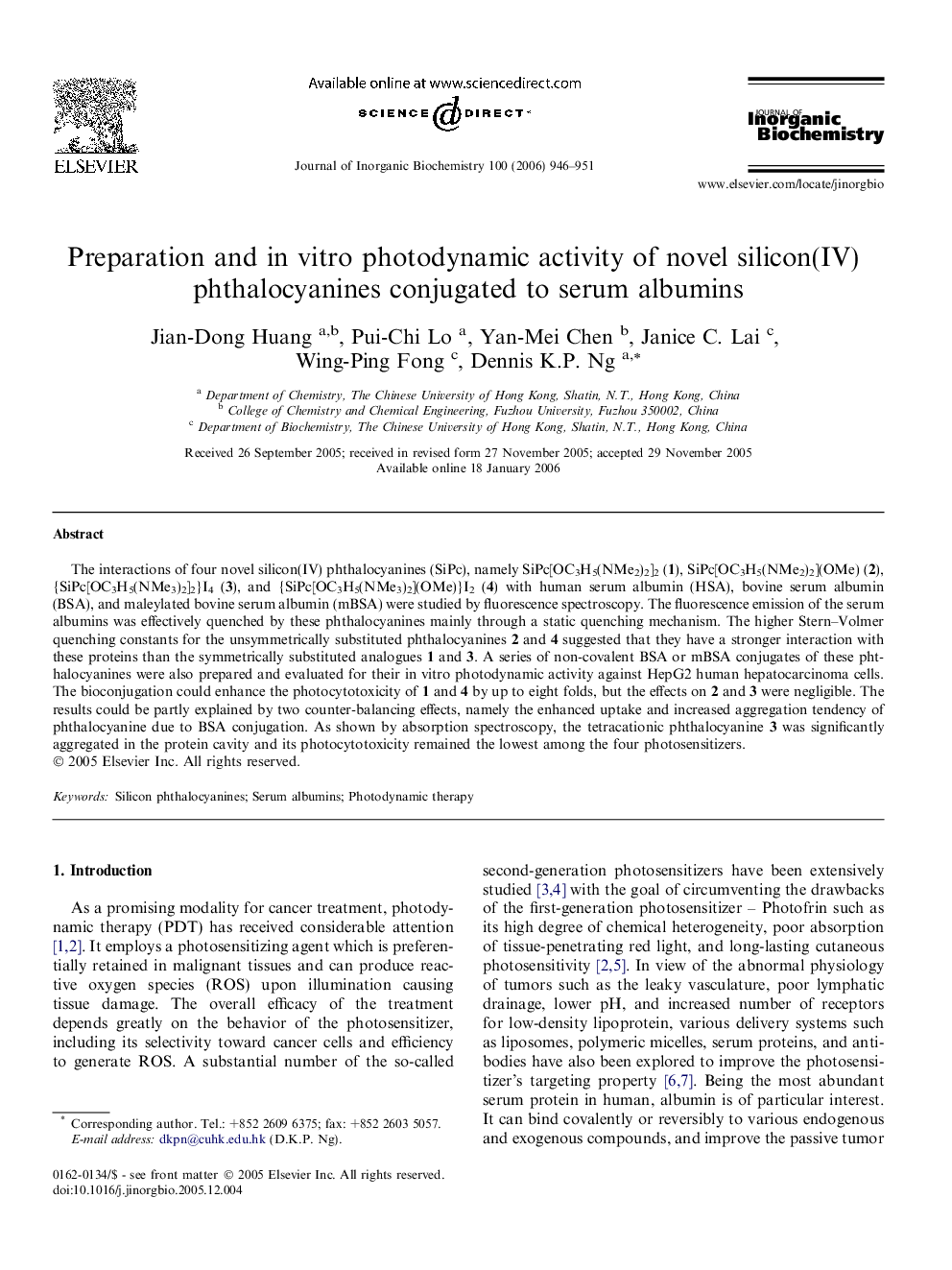| Article ID | Journal | Published Year | Pages | File Type |
|---|---|---|---|---|
| 1318189 | Journal of Inorganic Biochemistry | 2006 | 6 Pages |
The interactions of four novel silicon(IV) phthalocyanines (SiPc), namely SiPc[OC3H5(NMe2)2]2 (1), SiPc[OC3H5(NMe2)2](OMe) (2), {SiPc[OC3H5(NMe3)2]2}I4 (3), and {SiPc[OC3H5(NMe3)2](OMe)}I2 (4) with human serum albumin (HSA), bovine serum albumin (BSA), and maleylated bovine serum albumin (mBSA) were studied by fluorescence spectroscopy. The fluorescence emission of the serum albumins was effectively quenched by these phthalocyanines mainly through a static quenching mechanism. The higher Stern–Volmer quenching constants for the unsymmetrically substituted phthalocyanines 2 and 4 suggested that they have a stronger interaction with these proteins than the symmetrically substituted analogues 1 and 3. A series of non-covalent BSA or mBSA conjugates of these phthalocyanines were also prepared and evaluated for their in vitro photodynamic activity against HepG2 human hepatocarcinoma cells. The bioconjugation could enhance the photocytotoxicity of 1 and 4 by up to eight folds, but the effects on 2 and 3 were negligible. The results could be partly explained by two counter-balancing effects, namely the enhanced uptake and increased aggregation tendency of phthalocyanine due to BSA conjugation. As shown by absorption spectroscopy, the tetracationic phthalocyanine 3 was significantly aggregated in the protein cavity and its photocytotoxicity remained the lowest among the four photosensitizers.
